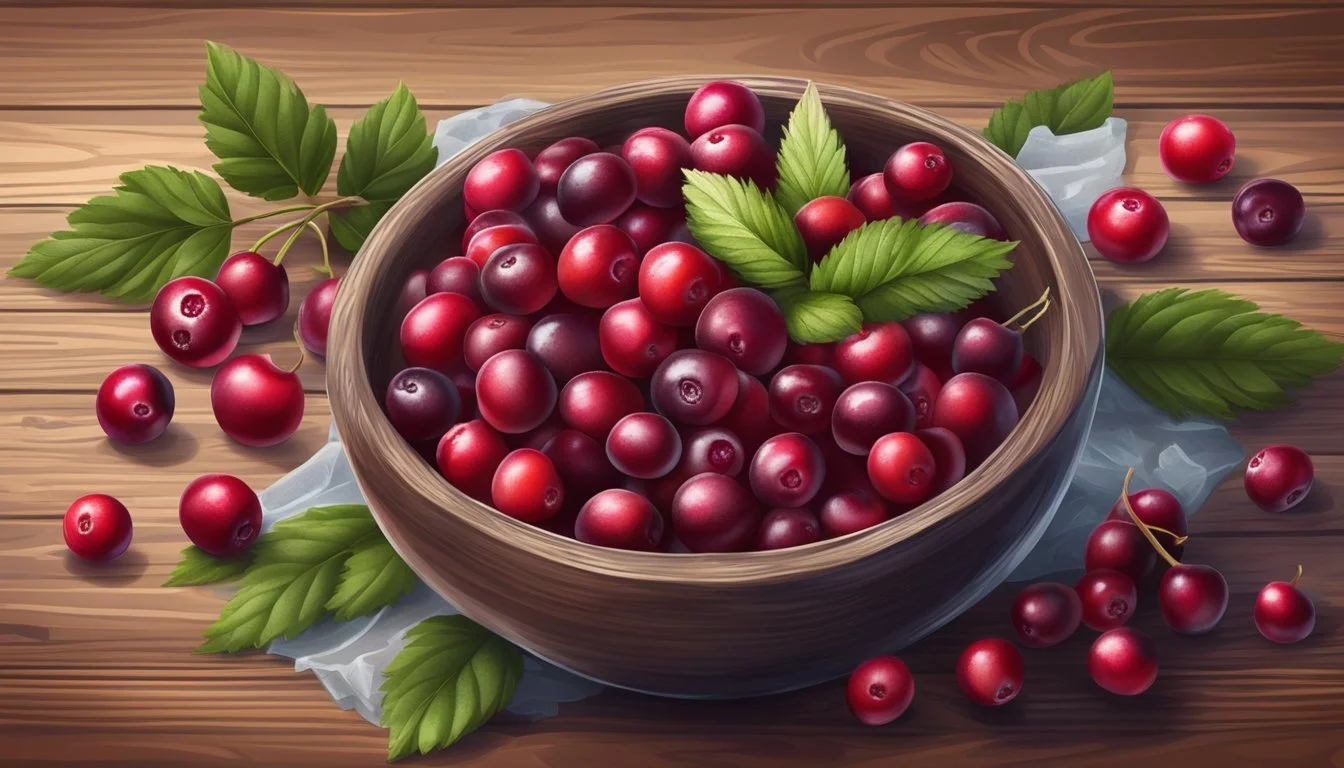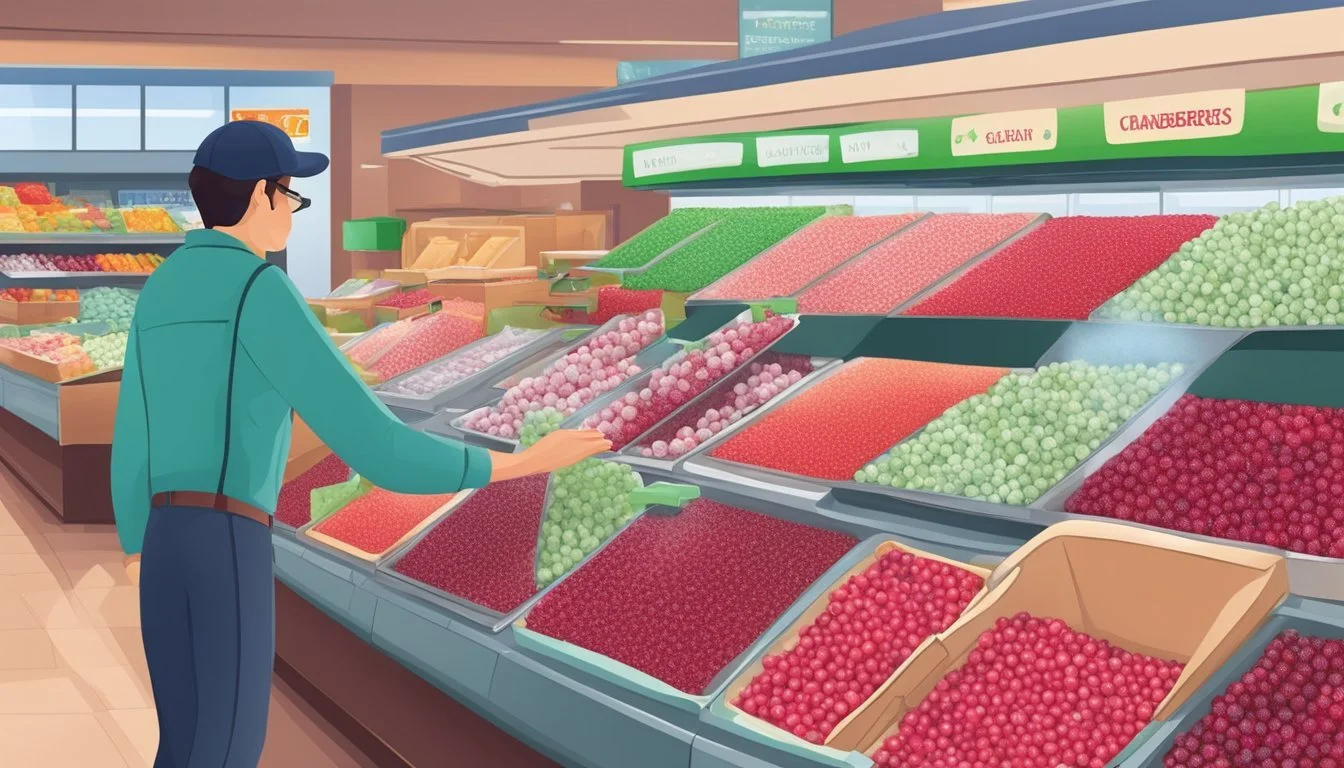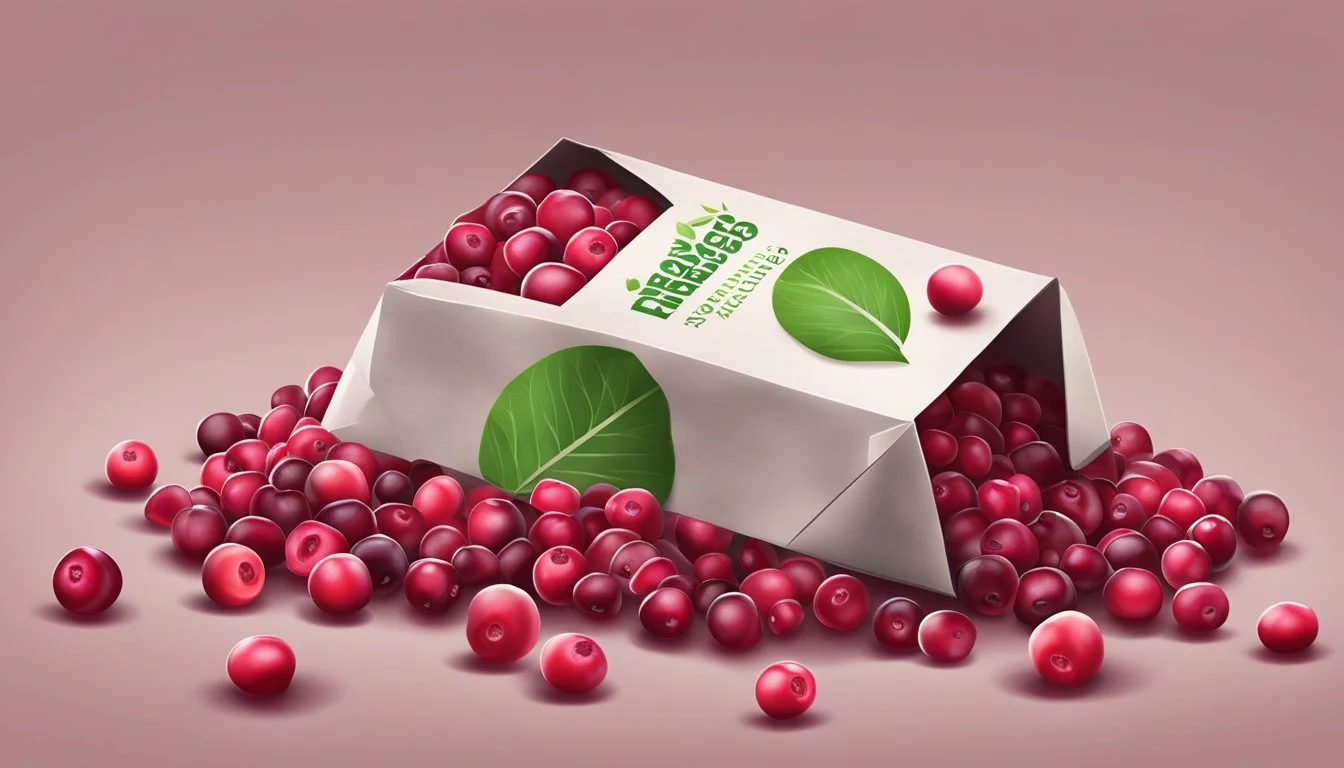Fresh vs. Frozen Cranberries: Choosing the Best for Your Holiday Recipes
Cranberries offer a vibrant burst of flavor and color to countless recipes. Whether fresh or frozen, these tart berries bring a unique zing to dishes year-round. Frozen cranberries are just as nutritious and versatile as their fresh counterparts, making them an excellent choice for cooking and baking.
While fresh cranberries are typically only available during the fall harvest season, frozen cranberries provide a convenient alternative throughout the year. They retain their shape and texture when thawed, allowing for seamless substitution in most recipes. This accessibility enables home cooks and professional chefs alike to incorporate cranberries into their culinary creations regardless of the season.
From sweet to savory applications, cranberries add depth and complexity to a wide range of dishes. Their tartness balances rich flavors in sauces, baked goods, and main courses. With proper storage, both fresh and frozen cranberries can maintain their quality for extended periods, ensuring a ready supply of this versatile ingredient for various culinary adventures.
Cranberries Overview
Cranberries are small, tart berries packed with nutrients and health benefits. These vibrant red fruits have a rich history and versatile culinary uses.
History and Origins
Cranberries are native to North America, particularly the northeastern United States and southern Canada. Native Americans used cranberries for food, medicine, and dye long before European settlers arrived. The Algonquin people called them "sassamanash" and introduced them to early colonists.
In the early 1800s, commercial cultivation of cranberries began in Massachusetts. Henry Hall, a Revolutionary War veteran, noticed wild cranberries grew better in areas covered by sand. This discovery led to the development of modern cranberry farming techniques.
Today, cranberries are grown in several U.S. states, including Wisconsin, Massachusetts, and Oregon. They're harvested in autumn, often through a unique flooding method that allows the berries to float for easy collection.
Health Benefits
Cranberries are renowned for their nutritional value and potential health benefits. They are low in calories but high in important nutrients.
These berries are rich in antioxidants, particularly flavonoids and polyphenols. These compounds help protect cells from damage caused by free radicals, potentially reducing the risk of various diseases.
Cranberries are an excellent source of vitamin C, which supports immune function and skin health. A one-cup serving provides about 24% of the recommended daily intake of this essential vitamin.
The berries also contain a good amount of fiber, promoting digestive health and helping to maintain healthy cholesterol levels. One cup of whole cranberries provides about 4.6 grams of fiber.
Research suggests cranberries may help prevent urinary tract infections by inhibiting bacteria from adhering to the bladder wall. They might also promote heart health by improving cholesterol levels and reducing blood pressure.
Selecting Cranberries
Choosing the right cranberries is crucial for optimal flavor and quality in your recipes. Fresh and frozen options are available, each with distinct characteristics to consider.
Fresh Cranberries
Fresh cranberries are typically available in grocery stores from September through December. Look for firm, plump berries with a deep red color. Avoid berries that are soft, shriveled, or have brown spots.
High-quality cranberries will bounce when dropped on a hard surface due to the air pockets inside. This is a quick test you can perform in the store.
Choose organic cranberries if you prefer fruits grown without synthetic pesticides or fertilizers. These may have a slightly higher price point but offer peace of mind for health-conscious consumers.
Frozen Cranberries
Frozen cranberries are available year-round in most grocery stores. They offer convenience and longer shelf life compared to fresh berries.
When selecting frozen cranberries, check for packages free of frost or ice crystals, which can indicate thawing and refreezing. Choose bags that feel loose, not solid, as this suggests the berries were individually quick-frozen.
Opt for unsweetened frozen cranberries to maintain control over sugar content in your recipes. Some brands offer organic frozen options for those seeking pesticide-free berries.
Frozen cranberries retain their nutritional value and can be used interchangeably with fresh in most recipes, making them a versatile choice for year-round use.
Cranberries in Cooking
Cranberries offer versatility in both sweet and savory dishes. Their tart flavor and vibrant color make them a popular ingredient in various recipes, from baked goods to sauces and beverages.
Sweet Applications
Cranberries shine in sweet treats. Muffins and cakes benefit from their tangy burst, balancing sugary flavors. Add fresh or frozen cranberries to batters for a pop of color and taste. Tarts featuring cranberries provide a delightful contrast to buttery crusts.
Smoothies gain a nutritious boost from cranberries. Blend them with bananas and oranges for a refreshing drink. Frozen cranberries work especially well, eliminating the need for ice.
Cranberry sauce, a holiday staple, is simple to make. Combine cranberries, sugar, and water in a saucepan. Cook until the berries burst and the mixture thickens. Add orange zest for extra flavor.
Savory Pairings
Cranberries complement savory dishes too. Chutney made with cranberries pairs well with roasted meats. Combine cranberries, onions, vinegar, and spices for a tangy condiment.
Sauces featuring cranberries enhance poultry and pork. Simmer cranberries with broth, herbs, and a touch of honey for a sophisticated accompaniment.
Dried cranberries add texture and flavor to salads and grain dishes. Reconstitute them in hot water or fruit juice before using.
Stuffings and bread benefit from cranberries' tartness. Mix them into dough or stuffing mixtures for a surprising twist on traditional recipes.
Home Storage Tips
Proper storage techniques are essential for maintaining the quality and extending the shelf life of cranberries. Following these methods will help preserve their freshness and flavor.
Storing Fresh Cranberries
Fresh cranberries can be stored in the refrigerator for optimal freshness. Place them in a plastic bag or airtight container before refrigerating. Avoid washing the berries before storage, as excess moisture can promote mold growth.
Check the cranberries regularly and remove any soft or discolored ones to prevent spoilage from spreading. When stored properly, fresh cranberries can last up to 4 weeks in the refrigerator.
For longer-term storage, consider freezing the cranberries.
Freezing and Thawing
Freezing cranberries is an excellent way to preserve them for future use. Spread the berries in a single layer on a baking sheet and freeze until solid. Once frozen, transfer them to a freezer-safe bag or airtight container.
Remove as much air as possible from the container to prevent freezer burn. Label the container with the date to track freshness. Frozen cranberries can last up to 12 months in the freezer.
To thaw frozen cranberries, transfer them to the refrigerator and allow them to defrost slowly. Alternatively, use them directly in recipes without thawing, adjusting cooking times as needed.
Preparing Cranberries
Proper preparation is key to bringing out the best flavor and texture of cranberries. Whether using fresh or frozen, a few simple steps ensure optimal results in recipes.
Rinsing and Drying
For fresh cranberries, rinse them in cool water to remove any debris or stems. Place the berries in a colander and gently shake to drain excess water. Spread them on a clean kitchen towel or paper towels to air dry completely before use.
Frozen cranberries don't require rinsing. Remove them from the freezer and use directly in recipes. There's no need to thaw frozen cranberries before cooking or baking. Using them frozen helps maintain their shape and prevents bleeding of color into batters or doughs.
Preparation Techniques
Chopping cranberries can be done easily with a sharp knife or food processor. For a coarse chop, pulse frozen berries briefly in a food processor. To slice fresh cranberries, cut them in half lengthwise.
For sauces and relishes, whole berries work well. They pop open during cooking, releasing their juices and creating a thick consistency. In baked goods, leave cranberries whole or chop coarsely to distribute evenly throughout the batter.
To reduce tartness, toss cranberries with sugar before adding to recipes. This step works for both fresh and frozen berries. Use about 1/4 cup sugar per 12-ounce package of cranberries.
Recipes and Ideas
Cranberries offer a versatile range of culinary applications, from sweet baked goods to tart condiments and refreshing beverages. Their unique flavor profile enhances both traditional and innovative recipes.
Baking Favorites
Cranberries shine in baked goods, adding tartness and moisture to a variety of treats. Cranberry muffins burst with flavor, featuring pockets of juicy berries in a tender crumb. For a heartier option, cranberry scones offer a delightful balance of sweetness and tang.
Cranberry cake is a showstopper, often incorporating orange zest for a complementary citrus note. Some recipes call for a streusel topping, adding texture and richness to the moist, fruit-studded base.
For breakfast, cranberry buckle combines the best of coffee cake and fruit crisp. This rustic dessert features a buttery cake layer topped with cranberries and a crumbly streusel.
Drink Innovations
Cranberry juice forms the base for many refreshing beverages. Mixed with sparkling water and a splash of lime, it creates a simple yet elegant mocktail. For cocktail enthusiasts, cranberry juice pairs well with vodka or gin.
Frozen cranberries can be blended into smoothies for a tart kick and vibrant color. They pair exceptionally well with other berries or tropical fruits like mango.
Hot cranberry cider offers a warming alternative in colder months. Simmer cranberry juice with cinnamon sticks, cloves, and orange slices for a comforting, spiced drink.
Condiments and Toppings
Cranberry sauce is a classic condiment, but its uses extend far beyond the holiday table. Homemade versions often include orange zest, cinnamon, or Port wine for added depth.
Cranberry vinaigrette brightens up salads with its tangy profile. Blend fresh or frozen cranberries with olive oil, vinegar, and honey for a quick dressing.
Cranberry jam makes a delightful spread for toast or a filling for pastries. Cooking cranberries with sugar and pectin creates a thick, spreadable preserve that captures the fruit's bold flavor.
For a savory application, cranberry chutney combines the berries with onions, spices, and vinegar. This versatile condiment pairs well with cheese boards or roasted meats.
Seasonal and Holiday Use
Cranberries play a significant role in seasonal celebrations and are enjoyed throughout the year. Their vibrant color and tart flavor make them a versatile ingredient for various occasions.
Thanksgiving Traditions
Cranberry sauce is a quintessential Thanksgiving staple. Many families prepare homemade versions using fresh cranberries, sugar, and orange zest. Some prefer the traditional jellied variety from a can.
Cranberries also feature in other holiday dishes. Stuffing often includes dried cranberries for a burst of flavor. Cranberry relish, made with raw berries and oranges, offers a fresh alternative to cooked sauce.
Decorative uses abound during Thanksgiving. Fresh cranberries can be strung into garlands or used as vase fillers. They add a festive touch to centerpieces and wreaths.
Year-Round Celebrations
Cranberries aren't limited to autumn festivities. They shine in summer salads and cocktails. Frozen cranberries blend well into smoothies and sorbets.
Winter holidays embrace cranberries too. They're used in Christmas baking, from cookies to fruitcakes. Cranberry juice is a key ingredient in holiday punch recipes.
Spring sees cranberries in lighter fare. They pair well with grilled meats and add zing to fruit compotes. Dried cranberries enhance trail mixes and granolas year-round.
Cranberry products like dried berries and juice allow for consistent use in any season. This versatility makes cranberries a pantry staple for many households.
Shopping for Cranberries
Fresh and frozen cranberries can be found in various retail locations, with availability and pricing dependent on the season and store. Consumers have options for both in-person and online purchases to suit their preferences and needs.
Grocery Store Tips
Look for fresh cranberries in the produce section of grocery stores from October to December. Choose firm, plump berries with a deep red color. Organic options may be available at higher price points. Outside of peak season, check the frozen fruit aisle for year-round availability. Some stores offer store-brand frozen cranberries at competitive prices. Compare prices between fresh and frozen to get the best value. Whole Foods Market carries both fresh and frozen cranberries, including organic varieties.
Online Shopping and Pickup
Many retailers offer online shopping for cranberries with convenient pickup options. Use the Instacart app to order from local stores and schedule same-day pickup or delivery. Enter your zip code to see available stores and pricing. Delivery fees start at $3.99 for orders over $35. Some online stores sell larger packages of frozen cranberries year-round. Check for expedited shipping options when ordering from specialty producers. Instacart's service fees may vary based on location and order details.
Packaging and Sustainability
Cranberry packaging has evolved to meet consumer demands for sustainability. Producers now offer more eco-friendly options for both fresh and frozen cranberries.
For fresh cranberries, recyclable plastic containers or compostable fiber-based packaging are becoming common. These materials reduce environmental impact while maintaining product freshness.
Frozen cranberry packaging often utilizes resealable bags or boxes made from recyclable materials. This helps prevent freezer burn and allows for portioned use.
Some companies have introduced innovative solutions:
Sugarcane-based fiber bowls for frozen cranberries
Compostable foam packaging made from cornstarch
Biodegradable plastic alternatives
Organic cranberry producers typically prioritize sustainable packaging to align with their environmentally conscious brand image.
When purchasing cranberries, consumers are recommended to look for:
Recyclable or compostable packaging
Minimal plastic use
Clear labeling of organic certification (if applicable)
Packaging that maintains product quality and prevents spoilage
The frozen food industry has seen significant growth in e-commerce, prompting manufacturers to focus on packaging that ensures product integrity during shipping while remaining environmentally responsible.




